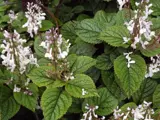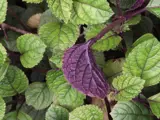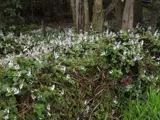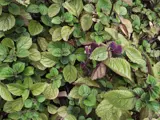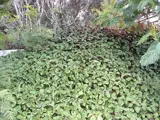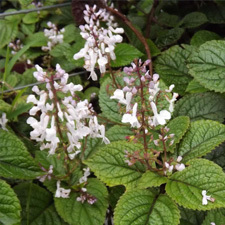 Plectranthus
Plectranthus
Common name: Plectranthus
Botanical name: Plectranthus ciliatus
Management category: Advisory
Originally from South Africa and was introduced to New Zealand as an ornamental species. Recorded as naturalised in 1988.
Why is it a pest?
- Forms dense mats that prevent seedlings of native species from establishing leading to the eventual thinning of the canopy.
- Tolerant of damp, moderate shade and cool to high temperatures.
- Opens the area up to the invasion of other weedy vines and shrubs.
Where is it found?
Damp, shaded areas, especially disturbed forest, shrubland, streamsides, river systems, fernland and wetlands.
What does it look like?
- A trailing or staggering herb with stems covered in purple hairs that form runners and root at nodes.
- Hairy oval, textured leaves with serrated edges are in opposite pairs and are purple underneath and dotted with glands.
- Erect stems of tubular white flowers with purple dots inside are produced (December to August), followed by small dark brown nutlets.
What are the rules?
Advisory
Council does not enforce the control of advisory species. It is landowner/occupier responsibility to manage these pests. Council may provide advice on how to manage or control advisory species if required.
How do you get rid of it?
- Pull-out (all year) – transfer, bury or burn waste
- Weedmat – leave for 3-6 months
- Spray (all year)
CAUTION: When using any herbicide or pesticide, PLEASE READ THE LABEL THOROUGHLY to ensure that all instructions and directions for the purchase, use and storage of the product, are followed and adhered to.
Read more on pest control advice, information and regulations.
Images

